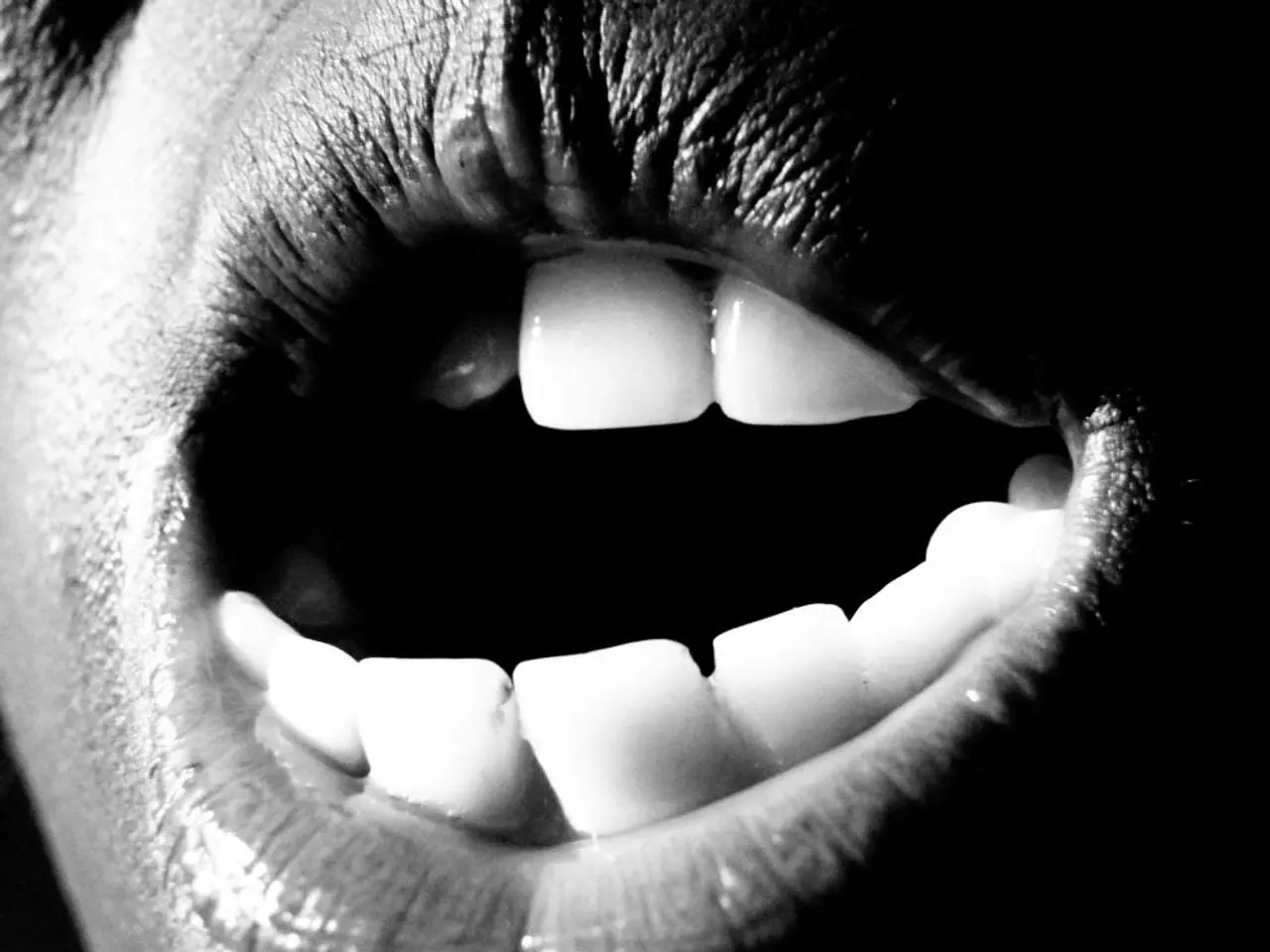Exercises to alleviate discomfort from Temporomandibular Joint disorders
TMJ disorders, a group of conditions affecting the muscles and bones of the jaw, can cause pain in the joint that connects the jaw to the skull. This joint, known as the temporomandibular joint (TMJ), is a crucial component that allows the jaw to move during eating, talking, or yawning.
Exercises for TMJ Disorders
Noninvasive or conservative therapies, including exercises, can help reduce pain and stiffness from TMJ disorders. Here are some exercises recommended by experts:
- Side-to-side jaw movement exercise: Move the jaw from side to side using an object about one-quarter of an inch thick.
- Resisted mouth closing exercise: Apply pressure to the chin while closing the mouth.
- The tongue up exercise: Open and close the mouth while maintaining contact with the roof of the mouth.
- Resisted mouth opening exercise: Apply pressure to the chin while opening the mouth.
- Forward jaw movement exercise: Move the jaw forward so that the bottom teeth are in front of the top teeth, using an object about one-quarter of an inch thick.
It is essential to discuss these exercises with a doctor or physical therapist before starting and to stop performing any exercise if it worsens the pain or discomfort.
Common Causes of TMJ Disorders
While trauma to the jaw, dental surgery, and autoimmune diseases are common causes of TMJ disorders, there are several other factors that may contribute to the development of these conditions.
- Bruxism: Excessive grinding or clenching of the teeth strains jaw muscles and joints.
- Stress: Leads to increased muscle tension, causing clenching and grinding, thus worsening TMJ symptoms.
- Arthritis: Osteoarthritis or rheumatoid arthritis can affect the TMJ joint itself.
- Jaw Misalignment: Uneven bite or misaligned jaw places pressure on the joint and muscles.
- Poor Posture: Forward jaw positioning and neck/spinal misalignment cause muscle strain around the TMJ.
- Muscle Overuse: Chewing hard or chewy foods excessively or frequent gum chewing can aggravate the joint and muscles.
- Dehydration: Reduces lubrication of the TMJ, leading to discomfort.
- Hormonal Influences: Estrogen levels and synthetic hormones from birth control may influence TMJ pain.
- Neck Muscle Strain: Fatigued neck muscles disrupt the balance of muscles supporting the TMJ.
- Medications: Some drugs induce teeth clenching and grinding, exacerbating TMJ tension.
Genetics may play some role, but TMJ disorders are often multifactorial, driven mainly by functional and environmental factors rather than heredity alone.
If you are experiencing pain from TMJ disorders, it is recommended to consult a doctor for possible treatment options, including physical therapy for a tailored exercise program and medical treatments if the exercises do not reduce symptoms. Oxford University Hospitals recommends a specific exercise routine for strengthening the jaw muscle and preventing clicking in the jaw joint.
[1] National Institute of Dental and Craniofacial Research (NIDCR). (2021). Temporomandibular Disorders. Retrieved from https://www.nidcr.nih.gov/health-info/tmj/treatment/conservative
[2] Oxford University Hospitals. (2021). Temporomandibular Joint Disorders (TMD). Retrieved from https://www.ouh.nhs.uk/patient-guide/leaflets/pages/Temporomandibular%20Joint%20Disorders%20(TMD).aspx
[4] American Academy of Oral and Maxillofacial Pathology (AAOMP). (2021). Temporomandibular Joint Disorders. Retrieved from https://www.aaomp.org/resources/patients/diseases/temporomandibular-joint-disorders/
[5] American Dental Association (ADA). (2021). Temporomandibular Disorders (TMD). Retrieved from https://www.ada.org/en/member-center/oral-health-topics/temporomandibular-disorders-tmd
- Exercises for TMJ disorders, such as the side-to-side jaw movement exercise and the tongue up exercise, can help relieve pain and stiffness in the temporomandibular joint by reducing muscle strain.
- Stress, Bruxism, poor posture, jaw misalignment, muscle overuse, dehydration, and hormonal influences are common contributing factors to the development of TMJ disorders beyond trauma and dental surgery.
- In addition to exercises and physical therapy, medical treatments for TMJ disorders may also include medications to manage associated pain and inflammation, or orthodontic appliances to correct jaw misalignment.
- Neck muscle strain and medications that induce teeth clenching and grinding can also exacerbate TMJ pain and discomfort.
- It is essential to seek the guidance of a medical professional or a physical therapist before trying any exercises or treatments for TMJ disorders, as avoiding or discontinuing exercises that worsen pain or discomfort is equally crucial.




